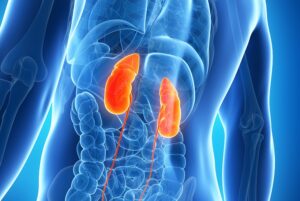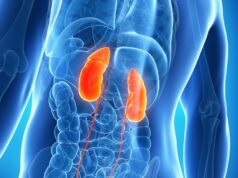 For patients with kidney stones measuring 1–2cm centimetres, a technique called mini-percutaneous nephrolithotomy (mini-PCNL) provides a higher stone elimination rate than another ureteroscopy, concludes a randomised trial in The Journal of Urology.
For patients with kidney stones measuring 1–2cm centimetres, a technique called mini-percutaneous nephrolithotomy (mini-PCNL) provides a higher stone elimination rate than another ureteroscopy, concludes a randomised trial in The Journal of Urology.
“In our clinical trial, mini-PCNL was more likely to achieve stone-free outcomes, compared to ureteroscopy,” comments senior author Jorge Gutierrez-Aceves (Cleveland Clinic, Cleveland, USA). “In patients with intermediate-sized kidney stones, mini-PCNL may offer a more effective procedure, with similar safety and cost impact.”
Trial compares minimally invasive surgeries for intermediate stones
Kidney stones are one of the problems most commonly seen by urologists. In current American Urological Association (AUA) guidelines, conventional PCNL surgery is recommended for patients with stones larger than 2cm, while less invasive treatments are recommended for symptomatic stones smaller than 1cm.
However, there is ongoing debate over treatment for intermediate-size stones measuring one to 2cm. In the URS procedure, kidney stones are approached using a small instrument (ureteroscope) placed through the urethra and bladder.
Mini-PCNL offers an alternative approach, with treatment carried out through a small incision in the patient’s side. Previous studies comparing the outcomes of URS and mini-PCNL have had important limitations.
In the new study, 101 patients with 1–2cm kidney stones were randomly assigned to treatment with URS or mini-PCNL. All patients had a single intermediate-sized stone in one kidney. In both procedures, once the surgeon visualised the stone through instruments placed into the kidney, the stone was fragmented using a laser and removed using a basket device.
Mini-PCNL has higher stone-free rate than ureteroscopy, with similar safety
The main outcome of interest was the stone-free rate, defined as no residual stone larger than two millimeters on postoperative CT scans. By this definition, 76% of patients were stone-free after mini-PCNL, compared to 46% after URS. The mini-PCNL group also had a lower total volume of residual stone fragments after treatment: 3.6 versus 1.4 millimeters.
Postoperative complication rates were described in a press release as “low” in both groups: 2% after mini-PCNL and 4% after ureteroscopy. Other safety outcomes were similar as well, including the need for a second procedure within 30 days and changes in creatinine as an indicators of kidney function.
In this study, patients in the mini-PCNL group spent a night in the hospital, compared to none in the ureteroscopy group. The mini-PCNL procedure had higher costs compared to ureteroscopy. However, these differences were offset by a nonsignificant operating margin between groups, the press release adds.
The study provides new information for the “nuanced” decision-making process for treatment of kidney stones measuring 1–2cm. The research authors state that their study is the largest North American randomised trial to directly compare mini-PCNL versus ureteroscopy for this group of patients.
“Our results suggest that mini-PCNL is more likely to render patients stone-free than ureteroscopy, with no difference in complications, surgical times, and operating margins,” Gutierrez-Aceves comments. The researchers discuss the cost impact of mini-PCNL, including the impact on equipment and hospitalisation costs.












